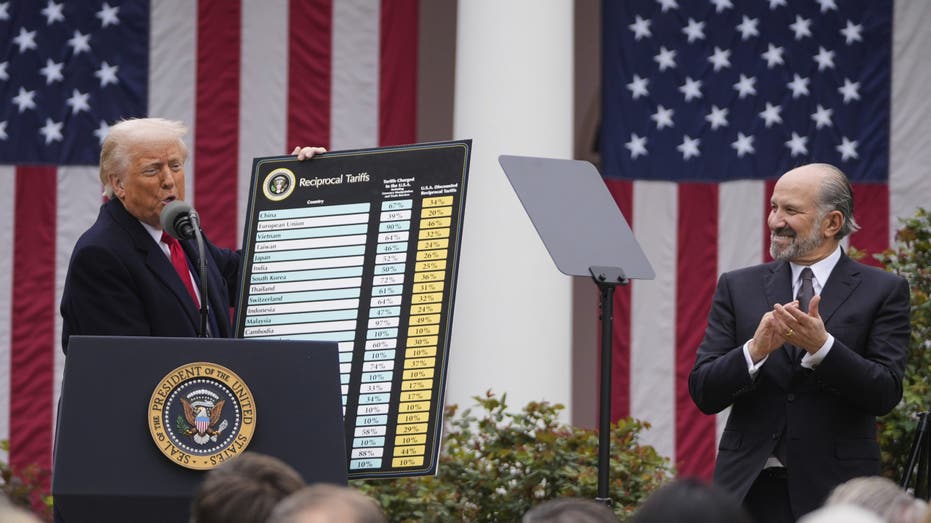Which Countries Are Slapping the Heaviest Tariffs on the US?

Sarah Johnson
April 4, 2025
Brief
President Trump escalates global trade wars with new tariffs on China, EU, and Canada, sparking retaliation and increasing economic tensions in agriculture, manufacturing, and energy sectors.
President Donald Trump has launched another aggressive salvo in the global trade wars, announcing sweeping tariffs on U.S. trading partners with a baseline 10% tax on all imported goods. The move targets what the administration calls the "Dirty 15"—countries with the largest trade deficits with the U.S. and those deemed guilty of "unfair" trading practices.
China, the eternal sparring partner, has been locked in a trade war with the U.S. since Trump’s first term. Back in 2018, Trump initiated 25% tariffs on $50 billion worth of Chinese goods, and Beijing retaliated with similarly hefty tariffs on U.S. agricultural products. The game of tariff tag continued until 2020, when some relief was negotiated. However, the fallout included an estimated loss of a quarter-million U.S. jobs by 2021.
Fast forward to 2025, and Trump, fresh off his re-election, slapped a blanket 20% tariff on all Chinese imports. Unsurprisingly, China responded with up to 15% tariffs on over $33 billion worth of U.S. agricultural products, including staples like chicken, wheat, and cotton. The U.S.-China trade deficit currently stands at a whopping $295.4 billion, painting a picture of ongoing economic tension.
Europe isn’t faring much better. Trump’s renewed tariff rampage includes a 25% tax on steel, aluminum, and imported cars, which directly impacts the European Union, the U.S.’s largest trading partner. Germany, in particular, is bracing for economic ripples as the EU threatens to hit back with retaliatory tariffs of up to $28 billion. Trump’s description of the $235.6 billion U.S.-EU trade deficit as "an atrocity" underscores his stance on the matter.
Meanwhile, agricultural products have become the battleground for tariff disputes. The EU imposes a staggering 50% tax on American dairy products, citing protected agricultural markets and strict animal welfare regulations as barriers to lowering prices. According to trade analyst Andrew Hale, Europe prioritizes quality and humane farming practices over mass production, making it unlikely to budge on these tariffs.
Canada hasn’t escaped Trump’s tariff wrath either. Despite existing tariff rate quotas under the USMCA agreement, Trump announced a blanket 25% tariff on all Canadian goods and an additional 10% on energy imports. Canada retaliated with reciprocal tariffs on $30 billion worth of U.S. goods, mostly targeting agriculture, and has threatened further measures worth $95 billion if tensions escalate. The back-and-forth has sparked concerns about job losses and potential recessions on both sides of the border.
Interestingly, some experts like Hale suggest scrapping tariffs altogether—zero tariffs on both ends of the table—as a way to foster truly free trade. However, he also sharply criticizes "stupid tariffs" on products that a country doesn’t even produce, calling them fundamentally unfair.
As the trade wars continue, the global economic landscape remains fraught with uncertainty. One thing’s for sure: Trump’s hardline approach is shaking up the traditional rules of international trade.
Topics
Editor's Comments
Trump seems to be playing the role of the global tariff sheriff, but the question is—how far can you push before the villagers start revolting? With China, Europe, and Canada all gearing up for retaliatory measures, this feels less like a trade negotiation and more like a high-stakes poker game where everyone's bluffing. Also, can we talk about the absurdity of tariffing stuff you don't even grow? That's like charging someone for air they didn't breathe.
Like this article? Share it with your friends!
If you find this article interesting, feel free to share it with your friends!
Thank you for your support! Sharing is the greatest encouragement for us.
